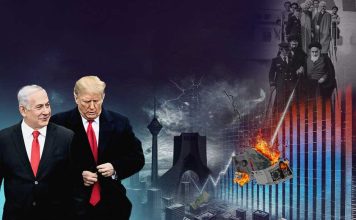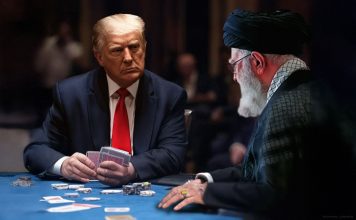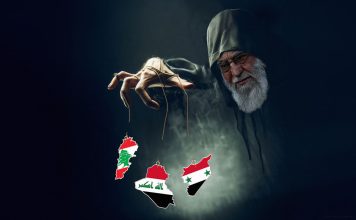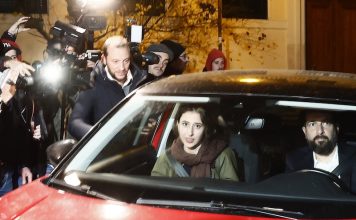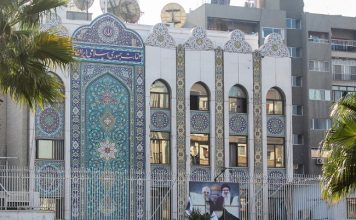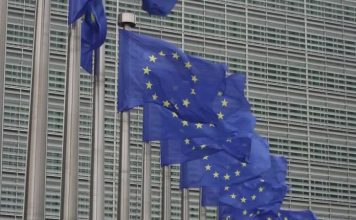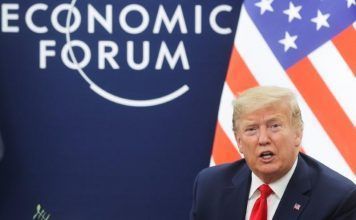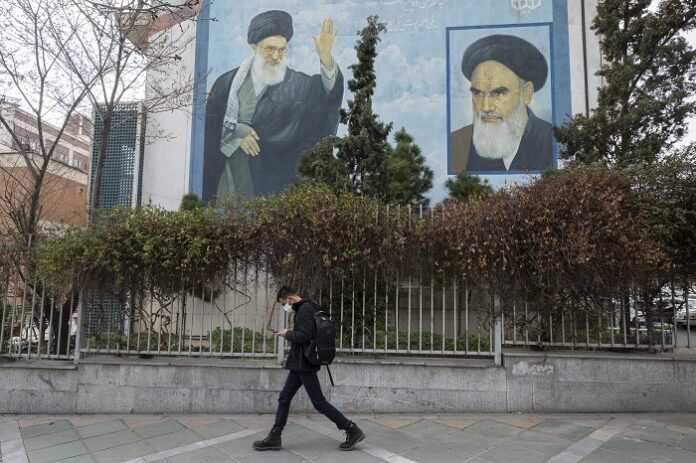
By Ahmad Rafat
Elections for the 16th Majlis (Iranian Parliament) and for the sixth Assembly of Experts (which has the power to appoint Iran’s Supreme Leader) were held on March 1 in Iran.
These elections marked the lowest voter turnout in the 45-year history of the Islamic Republic. According to official reports, only 40 percent of eligible voters went to the polls. Some suggest that the actual turnout figure was less than 20 percent.
Iran Regime’s Election Turnout Hits Record Low, Hardliners Maintain Grip on Parliament
Despite massive state propaganda and pressure on government employees and military personnel, the number of spoiled (or invalid) votes stood at 30 percent.
ANALYSIS: Islamic Republic Elections Draw Worst-Ever Turnout
While the election of 290 Majlis representatives failed to generate public interest, the election of members of the Assembly of Experts sparked debates and speculation because of its potential implications for Iran’s future leadership.
The current Supreme Leader, Ali Khamenei, is 85, leading to concerns about his eventual succession.
Given his age and state of health, a new Supreme Leader will probably need to be chosen during the upcoming eight-year term of the Assembly of Experts.
Speculation about Ali Khamenei’s successor has garnered significant interest in Iran and internationally.
This issue was highlighted in the U.S. Intelligence Community’s Annual Threat Assessment, released on March 11.
The report underscored the potential passing of Ali Khamenei, which could pose a substantial challenge to the Iranian government, given the existing factionalism within the ruling class.
“Iran’s Supreme Leader, Ali Khamenei, has been serving in the position since 1989 and is in his mid-80s. His eventual passing could challenge a system characterized by elite factionalism that has only undergone a single supreme leader transition,” the U.S. Intelligence Community said.
The Assembly of Experts, as established in Article 107 of the Constitution of the Islamic Republic, is an advisory body with two primary duties.
These include overseeing the activities of the Supreme Leader, “ensuring that he fulfills his responsibilities as outlined in the Constitution,” and appointing a successor “in the event he resigns or passes away.”
Who might succeed Ali Khamenei has generated significant interest and speculation within the regime’s leadership circles.
Mohammad-Ali Mousavi Jazayeri, a member recently re-elected for his sixth term in the Assembly of Experts, claimed that the assembly has chosen a successor to Ali Khamenei but has kept the individual’s identity confidential to “safeguard them from potential assassination attempts.”
However, the office of the secretary of the Assembly of Experts has not yet commented on Mousavi Jazayeri’s assertion.
Mahmoud Mohammadi Araghi, the former head of the Islamic Development Organization and a member of the current Assembly of Experts, told the Iranian Labor News Agency (ILNA) that the name of one of the Supreme Leader’s children had been proposed as a potential successor in a previous assembly meeting, but Ali Khamenei had opposed this suggestion.
However, the prevailing sentiment in political circles in Iran and abroad and the significant involvement of Mojtaba, one of Ali Khamanei’s children, in the leader’s office contradicts Mahmoud Mohammadi’s assertion.
Mohammadi Araghi’s claim that Ali Khamenei opposes the appointment of his son as the next Supreme Leader does not completely negate the possibility of hereditary leadership within Iran’s political system. Instead, it could be a strategic maneuver to prevent exposing disputes over Mojtaba Khamenei’s role within the political hierarchy.
The Secretariat of the Assembly of Experts and Ali Khamenei’s office have not formally responded or reacted to these claims.
Despite concerns raised by the Islamic Republic’s critics, Mojtaba Khamenei’s involvement in Iran’s political landscape and his appointment as Iran’s Supreme Leader after his father’s death have been a subject of discussion for nearly two decades.
One pivotal moment that shed light on Mojtaba Khamenei’s influence on high-level politics in Iran was the 2009 presidential election.
The controversial victory of Mahmoud Ahmadinejad in that election highlighted the behind-the-scenes maneuvering and power dynamics involving Mojtaba Khamenei.
[aesop_image img=”https://kayhanlife.com/wp-content/uploads/2024/03/2019-05-31T000000Z_905897830_MT1NURPHO000YGOZR7_RTRMADP_3_IRAN-MOJTABA-KKHAMENEI.jpg” panorama=”off” credit=”May 31, 2019 file photo shows, Son of Islamic Republic’s Ayatollah Ali Khamenei, Mojtaba Khamenei, attends a demonstration to mark Jerusalem day in Tehran. REUTERS./” align=”center” lightbox=”on” captionsrc=”custom” captionposition=”left” revealfx=”off” overlay_revealfx=”off”]
U.S. Targets Iranian Top Leader’s Inner Circle with New Sanctions
Mehdi Karroubi, a former Majlis Speaker and a candidate in the contentious 2009 presidential election, publicly accused Mojtaba Khamenei of interfering in the election process.
Karroubi claimed that Mojtaba Khamenei supported specific candidates and influenced the election’s outcome.
However, as time passed, concerns over Mojtaba Khamenei’s influence extended beyond the election. The focus shifted towards the possibility of him succeeding his father as the leader of Iran.
The Islamic Republic Constitution does not prohibit selecting the child or other relatives of the previous leader as his successor.
However, with the regime’s claim of “religious democracy,” it is not so easy even for staunch supporters of the regime to accept hereditary succession.
In recent years, there has been a concerted effort to promote Mojtaba Khamenei as his father’s successor through direct and indirect propaganda campaigns.
He has been strategically involved in various activities to bolster his image and acceptance as a potential leader within the regime.
These measures include his participation in public marches, posing for photographs with high-ranking Islamic Revolutionary Guards Corps (IRGC) commanders, and broadcasting footage of his teachings in seminaries.
[aesop_image img=”https://kayhanlife.com/wp-content/uploads/2019/11/haghani_mojtaba-e1572895307168.jpg” panorama=”off” credit=”Vahid Haghanian(L) speaks with Khamenei’s son, Mojtaba. SOURCE: KAYHAN LONDON” align=”center” lightbox=”on” captionsrc=”custom” captionposition=”left” revealfx=”off” overlay_revealfx=”off”]
These actions aim to shape public opinion and garner support from religious scholars, positioning Mojtaba Khamenei as a credible figure capable of assuming leadership within the Iranian regime.
The first aspect of the official position is the denial of having made a definitive decision regarding Mojtaba Khamenei’s future leadership prospects.
The regime insiders refrain from definitively confirming Mojtaba Khamenei’s ascension to a leadership position but often highlight his “ability and competence,” hinting at his potential suitability for such a role.
Sadegh Mohammadi, the vice-chair of the Assembly of Qom Seminary Scholars and Researchers, said that the “future leader of the Islamic Republic had not yet been decided.”
Mohammadi emphasized that the issue would be “addressed only by the next Assembly of Experts.”
He also highlighted Mojtaba Khamenei as a potential candidate because of his religious credentials and experience teaching at the Qom Seminary.
The election of a new Supreme Leader could reveal existing cracks within the government as different factions vie for influence.
The severe repression of dissenting voices has been a defining characteristic of the Islamic Republic, and any change in leadership could lead to political instability.
To avoid a rift in the Islamic Republic leadership, senior officials insist no one has been elected yet but also attempt to delay the decision by emphasizing Ali Khamenei’s good health.
This was evident when Ali Khamanei voted in the March 1 elections, walking without a cane, and maintaining a significant distance from his companions.
The current leadership of the Islamic Republic aims to dispel any rumors about Khamenei’s declining health with this action, projecting an image of robust health that suggests he intends to hold on to his position for many more years.
Ali Khamenei, like Ruhollah Khomeini, the founder of the Islamic Republic, is particular about selecting his successor.
Like his predecessor, Ali Khamenei desires his successor to uphold the fundamental policies established during his tenure.
In a strategic move, Ruhollah Khomeini marginalized his potential successor, Hosseinali Montazeri, after detecting Montazeri’s inclinations toward revisionist and reformist ideologies.
Despite sidelining Montazeri, Khomeini refrained from explicitly designating an alternative successor.
The Assembly of Experts convened for a crucial meeting before the recent elections, during which Ali Khamenei emphasized the importance of selecting a successor who upholds and aligns with the state’s established principles and values.
Mojtaba Khamenei has a significant following within the country’s political and religious circles. He has developed robust connections with senior government members during his father’s leadership.
Despite his influential supporters and connections, Mojtaba Khamenei also faces considerable opposition from various factions within the Islamic Republic, some of whom are not likely to relinquish their fight for power easily.
Meanwhile, certain state factions are discussing potential candidates to succeed Ali Khamenei. Several prominent figures have emerged among these candidates as contenders for this significant position.
One is Ebrahim Raisi, the current president of Iran, and the other is Alireza Arafi, who previously served as the president of Al-Mustafa International University in Qom.
Al-Mustafa International University is a notable institution that was granted an independent budget from the government during Khamenei’s rule.
This budget is sizable enough to accommodate students from 130 countries worldwide. These students are taught in 80 centers either in person or virtually to promote and spread the ideology of the Islamic Republic.
Iran Trains 200,000 Women Seminarians for Khamenei’s ‘Explanation Jihad’
Another candidate, Mohsen Qomi, is a prominent name in Iran’s political landscape, serving as the foreign minister of Ali Khamenei’s office.
Qomi lost three of his brothers during the Iran-Iraq War (1980-88). His mother was among the 400 Iranian Haj pilgrims who lost their lives in July 1987 in Saudi Arabia.
In 2005, Ali Khamenei described Qomi as “possessing the quality of grace, piety, and insight” and inducted him in “the honored supreme house of martyrdom.”
Qomi was appointed as an advisor on international affairs to Khamenei’s office and later promoted to deputy on international affairs in the same office.

